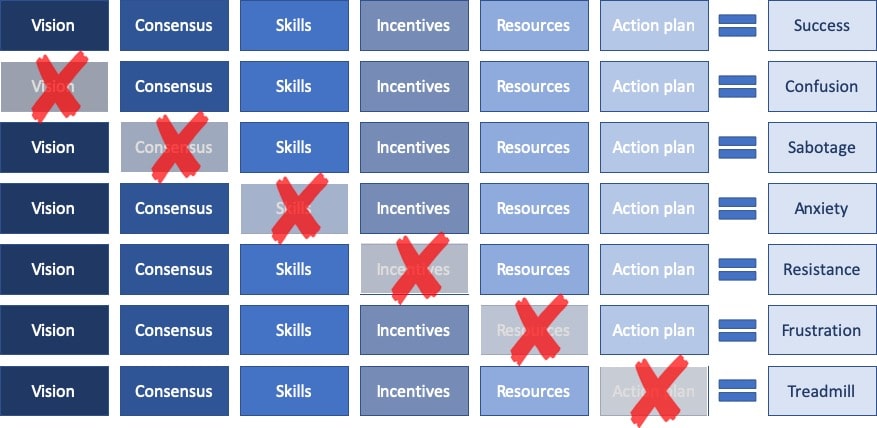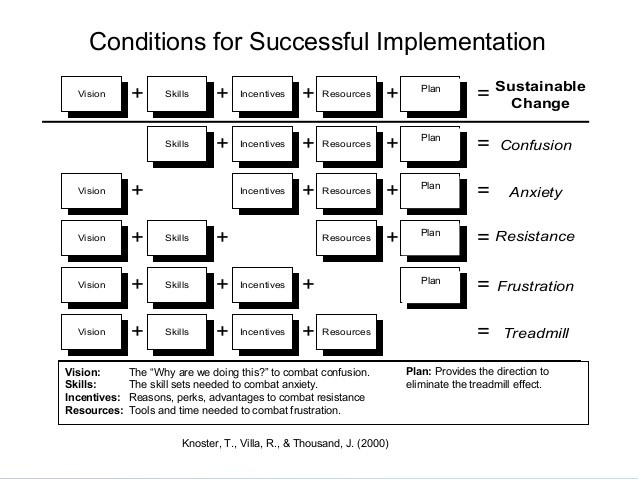Models: The Lippitt-Knoster Model for Managing Complex Change | Sergio Caredda
The Model for Managing Complex Change is widely used in Change Management presentations and articles around the web, as it outlines required elements fo change, and possible negative outcomes.
…
According to the model, there are five or six elements required for effective change: vision, consensus, skills, incentives, resources and an action plan. If anyone of these elements is missing, the change effort will fail, with varying Negative Change outcome.
| Element required | Symptom if missing |
|---|---|
| Vision | Confusion |
| Consensus | Sabotage |
| Skills | Anxiety |
| Incentives | Resistance |
| Resources | Frustration |
| Plan | Treadmill |

A good thing about the model:
… is an excellent tool both to plan Change, as well as to diagnose issues when a project is already happening. It provides a consolidated map of all the elements needed …
A bad thing about the model:
… it does not provide a sequence of the elements that are needed. Compared to Kotter’s model, for example, it lacks the direction or phasing of the various elements.
See also about the 5 elements Knoster Model
